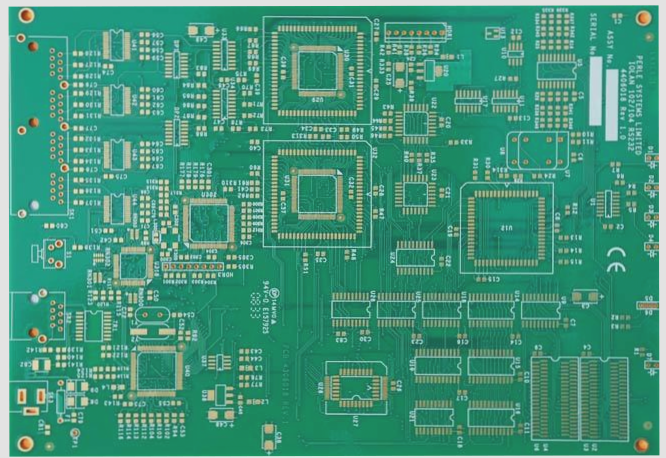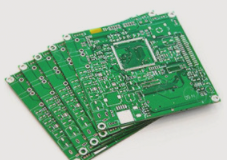1. Important factors to consider when designing FPC for space applications
In satellite applications, flexible FPCs offer several advantages over rigid PCBs. The inherent properties of flexible FPCs position them as the optimal choice for space applications. FPCs utilized in space environments must endure extremely harsh conditions. Therefore, it is crucial for designers to take the following factors into account before embarking on flexible FPC design for space applications.
Operating temperature
While FPCs are not directly exposed to outer space, their design must accommodate the internal environment of the satellite. The selection of materials for these FPCs is vital. For space applications, materials that can withstand operating temperatures exceeding 120°C should be prioritized.

**Restrict Deflation**
Using flexible printed circuits (FPC) in high-pressure vacuum environments may result in the release of gases trapped in the FPC during manufacturing. These gas leaks can condense in other parts of the equipment. When heat is applied to the FPC under high-pressure vacuum conditions, it forces the gas out, a process known as degassing. Selecting materials with excellent heat resistance in FPC design can help minimize outgassing.
**Continuous Orbital Collision**
Satellites orbit the Earth in a circular path, where the potential for collisions with other celestial bodies exists. The FPC must be capable of withstanding these minor collisions. Thus, the flexibility of the FPC is crucial. High flexibility/bendability is a vital consideration in the design of flexible FPCs for space applications.
**2. Why Use Flexible Circuit Boards in Satellite Applications?**
Flexible circuit boards offer numerous advantages over rigid PCBs in satellite applications. Their attributes, such as reduced weight and enhanced reliability, make them the preferred choice for space use. Let’s explore some functions of flexible circuit boards that suit space applications.
**Reliability**
In designing a PCB for space applications, reliability is paramount. There are instances of satellites operating for over 30 years. Dynamic flexible circuits can endure greater pressures than their rigid counterparts. Flexible circuit boards can also replace connectors, which are often prone to interconnection failures. Most connections in flexible circuit boards are integrated into the substrate, allowing them to withstand harsh conditions faced by satellites. The design permits bending thousands of times during operation, enabling flexible PCBs to perform reliably under adverse conditions.
**Versatility**
Operating electronic systems in space presents significant challenges. Designers require versatile electronic components to address these issues. Flexible circuit boards are more adaptable than other PCB types, allowing for unconventional shapes. They can form intricate three-dimensional configurations with branches extending to multiple connectors, unlike rigid PCBs. In some cases, fitting a large rigid PCB into compact areas of a spacecraft may not be feasible. Conversely, flexible circuits can be easily accommodated on the installation surface.
**Compact and Lightweight**
The flexible circuit features a thin copper layer and insulating layer, enabling a minimized bending radius as required. Consequently, these PCBs can be adapted for tighter spaces.
—
I hope this revision meets your expectations!
In satellite applications, flexible FPCs offer several advantages over rigid PCBs. The inherent properties of flexible FPCs position them as the optimal choice for space applications. FPCs utilized in space environments must endure extremely harsh conditions. Therefore, it is crucial for designers to take the following factors into account before embarking on flexible FPC design for space applications.
Operating temperature
While FPCs are not directly exposed to outer space, their design must accommodate the internal environment of the satellite. The selection of materials for these FPCs is vital. For space applications, materials that can withstand operating temperatures exceeding 120°C should be prioritized.

**Restrict Deflation**
Using flexible printed circuits (FPC) in high-pressure vacuum environments may result in the release of gases trapped in the FPC during manufacturing. These gas leaks can condense in other parts of the equipment. When heat is applied to the FPC under high-pressure vacuum conditions, it forces the gas out, a process known as degassing. Selecting materials with excellent heat resistance in FPC design can help minimize outgassing.
**Continuous Orbital Collision**
Satellites orbit the Earth in a circular path, where the potential for collisions with other celestial bodies exists. The FPC must be capable of withstanding these minor collisions. Thus, the flexibility of the FPC is crucial. High flexibility/bendability is a vital consideration in the design of flexible FPCs for space applications.
**2. Why Use Flexible Circuit Boards in Satellite Applications?**
Flexible circuit boards offer numerous advantages over rigid PCBs in satellite applications. Their attributes, such as reduced weight and enhanced reliability, make them the preferred choice for space use. Let’s explore some functions of flexible circuit boards that suit space applications.
**Reliability**
In designing a PCB for space applications, reliability is paramount. There are instances of satellites operating for over 30 years. Dynamic flexible circuits can endure greater pressures than their rigid counterparts. Flexible circuit boards can also replace connectors, which are often prone to interconnection failures. Most connections in flexible circuit boards are integrated into the substrate, allowing them to withstand harsh conditions faced by satellites. The design permits bending thousands of times during operation, enabling flexible PCBs to perform reliably under adverse conditions.
**Versatility**
Operating electronic systems in space presents significant challenges. Designers require versatile electronic components to address these issues. Flexible circuit boards are more adaptable than other PCB types, allowing for unconventional shapes. They can form intricate three-dimensional configurations with branches extending to multiple connectors, unlike rigid PCBs. In some cases, fitting a large rigid PCB into compact areas of a spacecraft may not be feasible. Conversely, flexible circuits can be easily accommodated on the installation surface.
**Compact and Lightweight**
The flexible circuit features a thin copper layer and insulating layer, enabling a minimized bending radius as required. Consequently, these PCBs can be adapted for tighter spaces.
—
I hope this revision meets your expectations!




